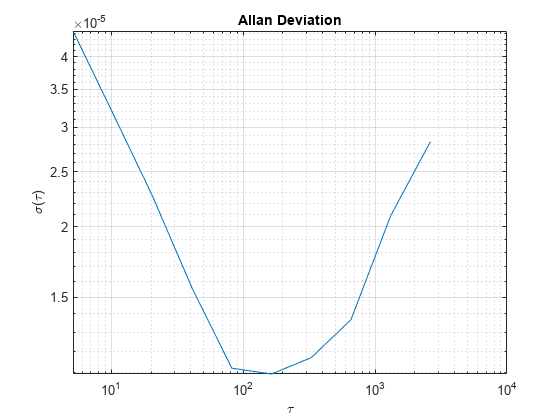allanvar
Allan variance
Syntax
Description
Allan variance is used to measure the frequency stability of oscillation for a sequence of data in the time domain. It can also be used to determine the intrinsic noise in a system as a function of the averaging time. The averaging time series τ can be specified as τ = m/fs. Here fs is the sampling frequency of data, and m is a list of ascending averaging factors (such as 1, 2, 4, 8, …).
[
returns the Allan variance avar,tau] = allanvar(Omega)avar as a function of averaging time
tau. The default averaging time tau is an octave
sequence given as (1, 2, ...,
2floor{log2[(N-1)/2]}),
where N is the number of samples in Omega. If
Omega is specified as a matrix, allanvar operates
over the columns of omega.
Examples
Input Arguments
Output Arguments
Version History
Introduced in R2019a

